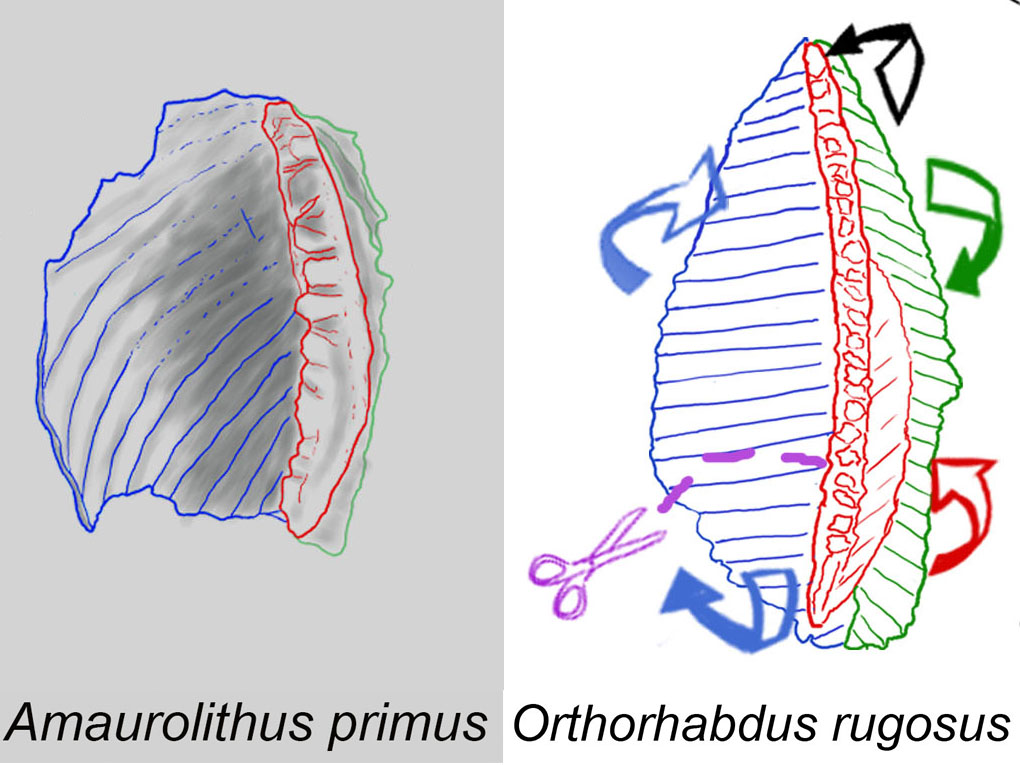Origin of the ceratolith genus Amaurolithus
Sediment samples from Ocean Drilling Program (ODP) Sites 999 and 1237 in the Caribbean Sea and Eastern Pacific Ocean were studied to monitor the evolution of ceratoliths from 7.4 Ma to 6 Ma. Orthorhabdus rugosus shows high variability at the end of the Tortonian to the Early Messinian (7.35 Ma to 6.91 Ma), resulting in the Amaurolithus (7.354 Ma) and Nicklithus branches (6.985 Ma). Orthorhabdus rugosus is an ortholith with three blades (sinistral, median, and dextral). The first ceratholith, A. primus, has two arms and a horseshoe shape with marked laths, and is stable and concave upwards. Its sinistral arm is formed from the sinistral blade of Orthorhabdus rugosus and the right arm is formed from the other blades.
The sudden appearance of A. primus in the sedimentary record at around 7.35 Ma was observed in both studied sections . The Figure shows the set modifications of O. rugosus producing the early A. primus. The modifications are not a gradual evolutionary sequence of intermediate progressively modified forms but occur simultaneously as they are present from the beginning of the first recorded specimens. Amaurolithus primus coexisted with the O. rugosus ancestor in the studied samples.

Cite as: Lancis, C., Tent-Manclús, J.-E., Flores, J.-A., 2022. Origin and evolutionary trends of the Neogene genera Amaurolithus and Nicklithus (calcareous nannofossils). Mar. Micropaleontol. 175, 102156. https://doi.org/https://doi.org/10.1016/j.marmicro.2022.102156

Recent Comments